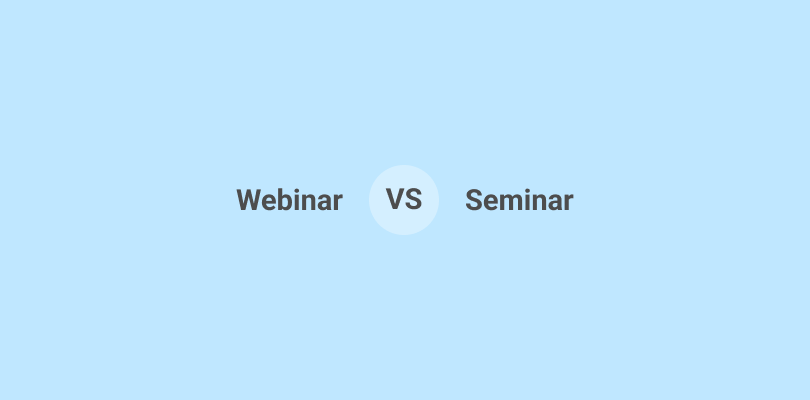
“If you’re a good marketing person, you have to be a little crazy.”




In the crazy world of marketing, establishing two-way communication with customers can always yield better outcomes.
Enters webinar marketing.
Now, you can use webinars to promote your products, services, and businesses like crazy and establish better communication and relationships with your customers.
In fact, as a part of the digital communication industry for the past decade, I have experienced the exponential growth of webinars in marketing and advertising.
Do you want more details on how to use webinars for marketing?
Let’s cash in on my experience to understand webinars for marketers, including smart strategies and benefits to help you get better returns on your investments.
What Is Webinar Marketing?
Webinar marketing is a strategy in which businesses use live webinars or recorded online webinars to engage with their audience. These sessions can include presentations, workshops, or discussions on a specific topic, often followed by a Q&A session. The primary goal is to educate potential customers, demonstrate products, and build brand authority.
For example, a software company might host a webinar to showcase a new tool, explain its benefits, and provide a live demo.
A recent study found that live webinars generate 89% of webinar leads, making them the top choice for marketers over on-demand content.
To see these strategies in action, check out this video from the Webinar Blueprint series, which explains how to market your webinars effectively.
How to Create a Winning Webinar Marketing Strategy
After getting an idea about webinar marketing, it’s time to learn some essential strategies to make good use of them.
Creating a killer webinar marketing strategy involves several key steps. Here’s a simple, step-by-step approach to help you understand the process of creating an effective webinar marketing plan:
1. Define Your Goals
First, decide what you want to achieve with your webinar. Do you want to generate leads, boost brand awareness, or educate your audience?
For instance, if your goal is to generate leads, you will focus on attracting as many attendees as possible and collecting their contact information.
Read More: How to Do Strategic Webinar Planning: A Step-by-Step Guide
2. Know Your Audience
Understand who your target audience is. This will help you create content that resonates with them.
If your audience is small business owners, your webinar should address their specific challenges, such as improving sales or managing cash flow.
3. Choose a Compelling Topic
Select a topic that interests your audience and offers them value. The topic you choose should address their pain points or provide solutions to their problems.
For example, when Shopify wanted to target e-commerce store owners, they hosted a webinar titled ‘How We Helped One Store Go From $0 to $100K in 90 Days’ instead of the generic ‘E-commerce Growth Strategies.
4. Create a Catchy Title
Your webinar title should be eye-catching and clearly convey the benefit of attending.
For instance, Mailchimp changed their webinar title from ‘Email Marketing Best Practices’ to ‘The $50K Email That Took 10 Minutes to Write’ and saw registration rates increase by 180%.
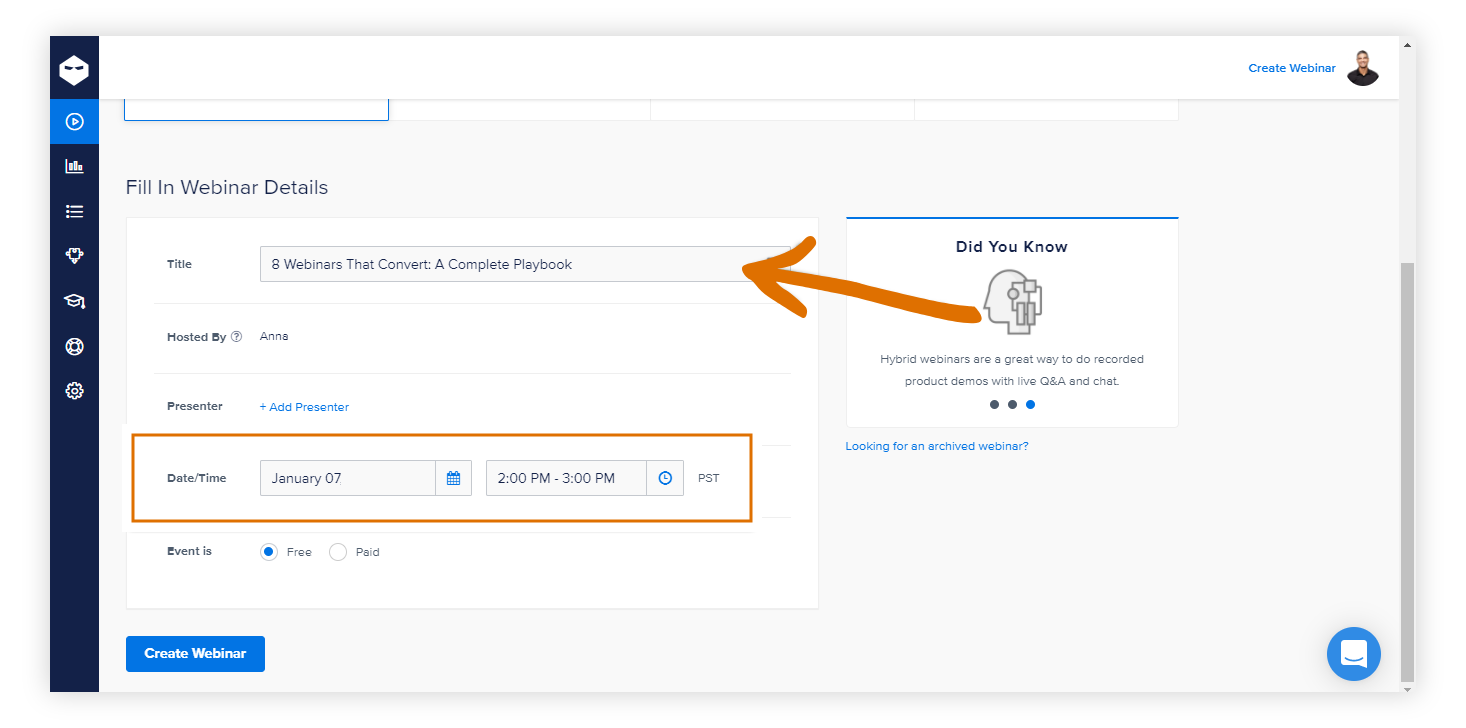

5. Plan Your Content
Outline the key points you will cover in your webinar. Make sure your content is informative, engaging, and provides actionable insights.
You can divide your webinar into sections such as Introduction, Key Strategies, Case Studies, Q&A, and Conclusion.
6. Choose the Right Platform
Select the best webinar platform that suits your needs. Consider features like ease of use, audience capacity, and interaction tools.
Platforms like WebinarNinja are really popular among the audience for hosting different types of webinars.
Also Read: 11 Features Every Webinar Software Must Have
7. Create a Landing Page
Build a dedicated landing page where people can register for your webinar. Include essential details like the date, time, topic, and what attendees will learn.
Your landing page might have a headline like “Join Our Free Webinar: Learn How to Triple Your Lead Generation” with a sign-up form.
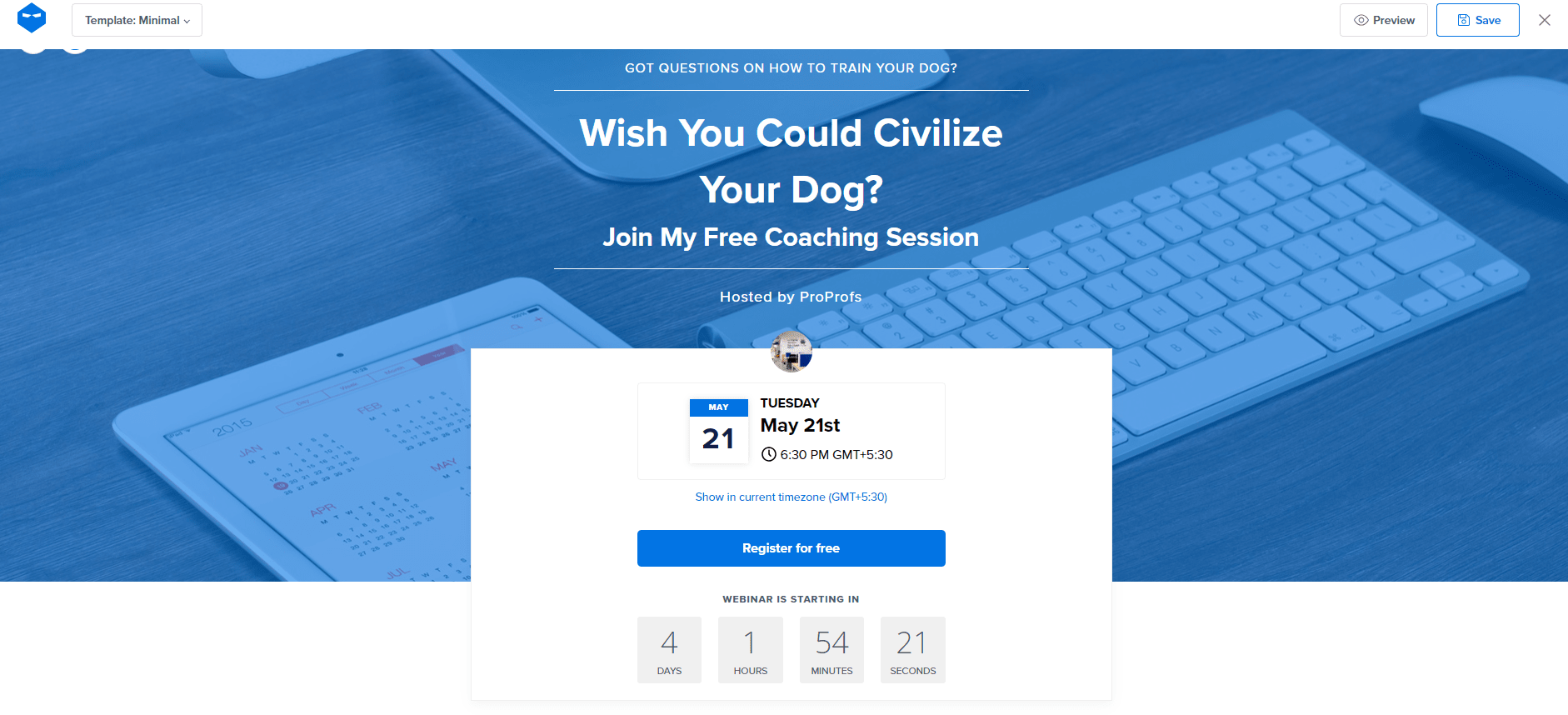

8. Collaborate with Industry Experts for Impactful Webinars
Leveraging partnerships through co-hosted webinars can boost your reach and credibility. When planning how to co-host webinars, align with experts who bring unique insights or complementary audiences.
Collaboration fosters broader engagement, shared promotion efforts, and stronger industry connections—resulting in a richer experience for participants and higher conversion rates.
9. Promote Your Webinar
Promote your webinar using various channels, including email marketing, social media, your website, and even paid ads.
You can send out email invitations, post about the webinar on LinkedIn, Facebook, and Twitter, and run a small ad campaign on Google or Facebook.
For example, Adobe’s Creative Cloud team promoted their design webinars by partnering with design influencers who shared the event with their followers, resulting in 300% higher registration rates than traditional promotion alone.
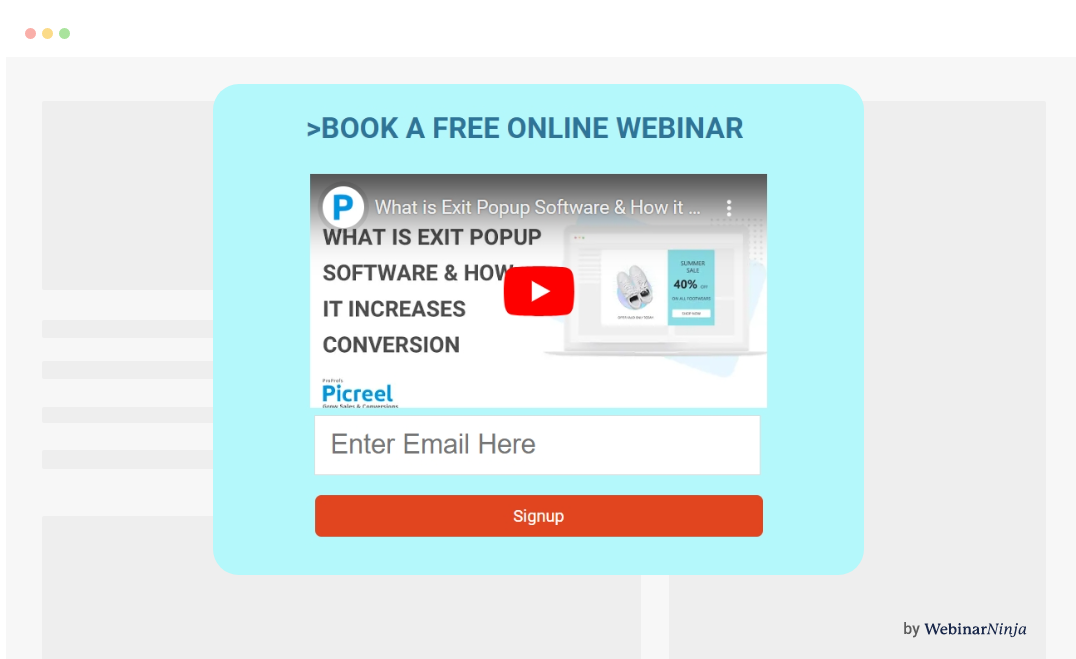

10. Send Reminders
People forget, so send reminder emails leading up to the webinar. Send one a week before, one the day before, and one an hour before the event.
For example, “Don’t forget! Our webinar on Boosting Sales is tomorrow at 2 PM. Here’s your link to join.”
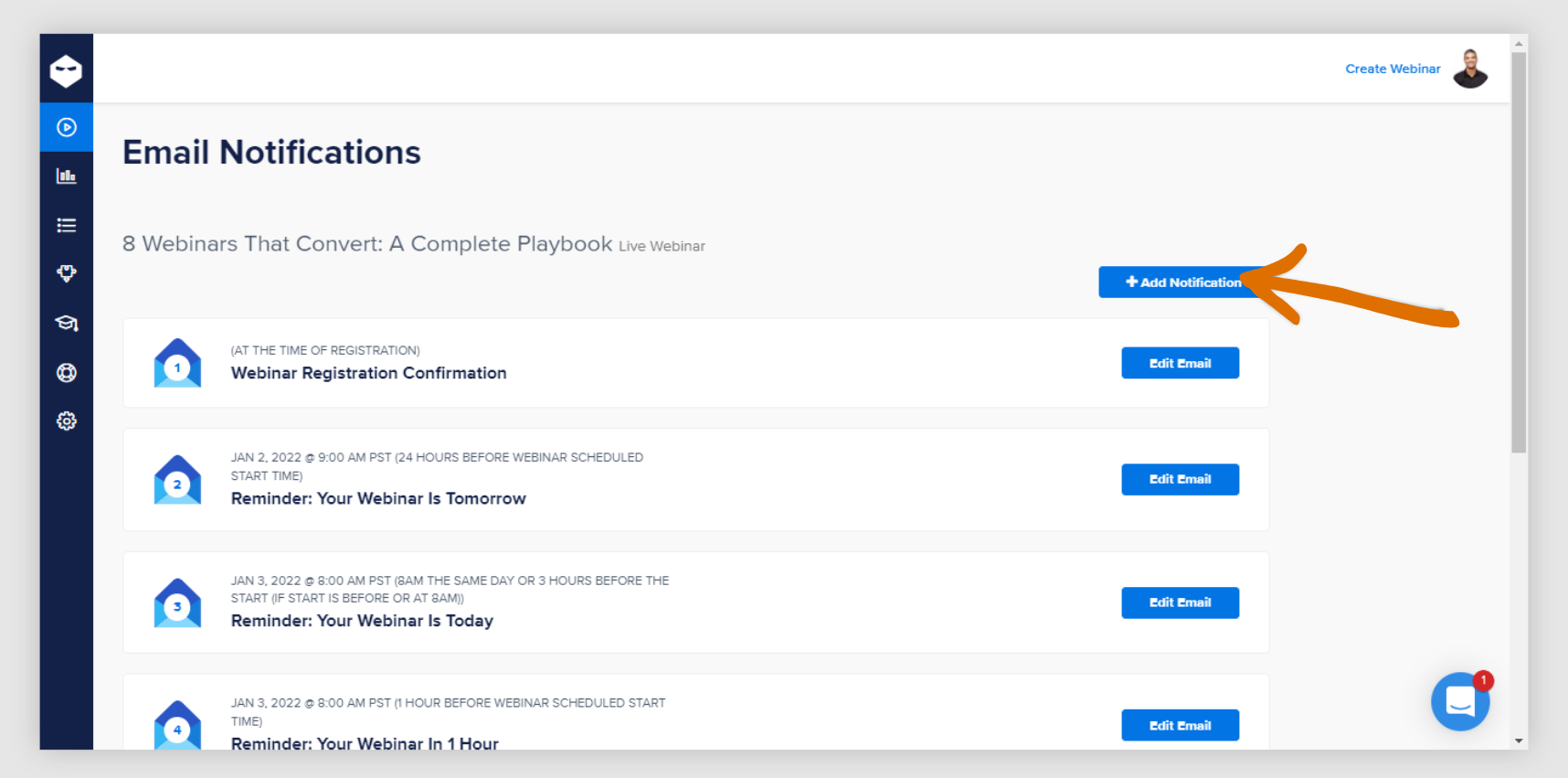

11. Engage Your Audience
During the webinar, keep your audience engaged with interactive elements like polls, Q&A sessions, and live chats.
For example, “We’re now opening the floor for questions. Type your questions in the chat, and we’ll answer them live!”
12. Follow Up After the Webinar
After the webinar, send a follow-up email to thank attendees, provide a link to the recording, and share additional resources or offers.
You can use statements such as, “Thank you for attending our webinar! Here’s the recording, and as a special thank you, enjoy a 10% discount on our services.” They can be really effective.
13. Analyze and Improve
Review the performance of your webinar. Look at metrics like attendance rate, engagement level, and feedback to improve future webinars.
Example of a Webinar Marketing Strategy
Let’s check out a sample webinar marketing strategy to help you better understand the process.
- Goal: Generate 200 new leads.
- Audience: Small business owners.
- Topic: “10 Proven Strategies to Increase Your Online Sales.”
- Title: “Boost Your Sales by 30% with These Proven Strategies.”
- Content Plan: Introduction, Key Strategies, Case Studies, Q&A, Conclusion.
- Platform: WebinarNinja
- Landing Page: Includes headline, benefits, and registration form.
- Promotion: Email campaign, social media posts, Google ads.
- Reminders: Sent one week, one day, and one hour before the webinar.
- Engagement: Live polls, Q&A sessions.
- Follow-Up: Thank-you email with recording link and discount offer.
- Analysis: Review attendance and engagement metrics to improve the next webinar.
How to Use Webinars for Marketing
You can always employ webinars for marketing, and they can be a powerful strategy to engage with your audience, generate leads, and position your brand as an industry leader. Here are different use cases for webinars in the marketing process:
1. Lead Generation
Webinars can attract potential customers who are interested in your product or service. By offering valuable content, you can collect contact information and follow up with attendees.
Pro Tip: Offer an exclusive resource, such as an eBook or a discount, as a post-webinar follow-up to keep your leads engaged and moving down the sales funnel.
2. Product Demonstrations
Use webinars to showcase your product in action, highlighting its features and benefits. This can help potential customers understand how your product solves their problems.
Pro Tip: Include a live Q&A session at the end of your product demo to address specific questions from attendees, making the session more interactive and engaging.
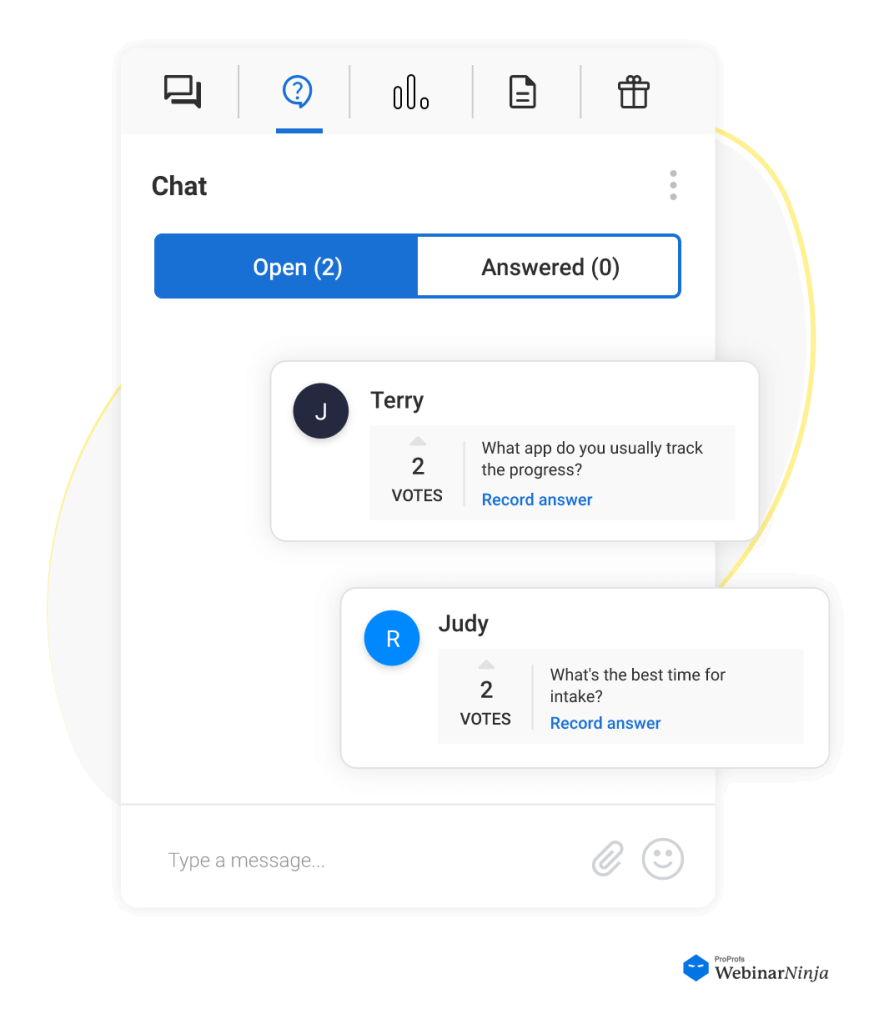

3. Thought Leadership
Establish your brand as an industry leader by hosting webinars on trending topics or industry challenges. Share insights and strategies that can help your audience stay ahead of the curve.
Pro Tip: Invite industry experts or influencers as guest speakers to add credibility and attract a larger audience to your webinar.
Also Read: How to Co-Host Webinars: A Detailed Guide
4. Customer Education and Training
Webinars can be used to educate your customers on how to use your product effectively, ensuring they get the most value from it. This can lead to higher customer satisfaction and retention.
Pro Tip: Create a series of educational webinars, each focusing on a different aspect of your product. This keeps your audience engaged over a longer period and encourages them to attend multiple sessions.
Take a look at how the Pacific Worlds Institute used webinars to reach remote learners, boost engagement, and make their educational programs more flexible, all while keeping things simple and effective with WebinarNinja.
5. Content Marketing
Webinars can serve as rich content for your marketing efforts. Record the sessions and repurpose them into blog posts, whitepapers, or social media snippets.
Pro Tip: Transcribe your webinar and use the content to create a comprehensive blog post, including key takeaways and highlights. This helps in driving SEO traffic and provides additional value to those who missed the live session.
6. Networking and Community Building
Webinars offer an opportunity to build a community around your brand. Encourage interaction among attendees through chat features and discussion forums.
Pro Tip: Create a dedicated LinkedIn or Facebook group for your webinar attendees to continue the conversation and network with each other post-webinar. This fosters a sense of community and keeps your brand top of mind.
7. Market Research
Use webinars to gather feedback and insights from your audience. Polls and surveys during the webinar can help you understand their needs and preferences.
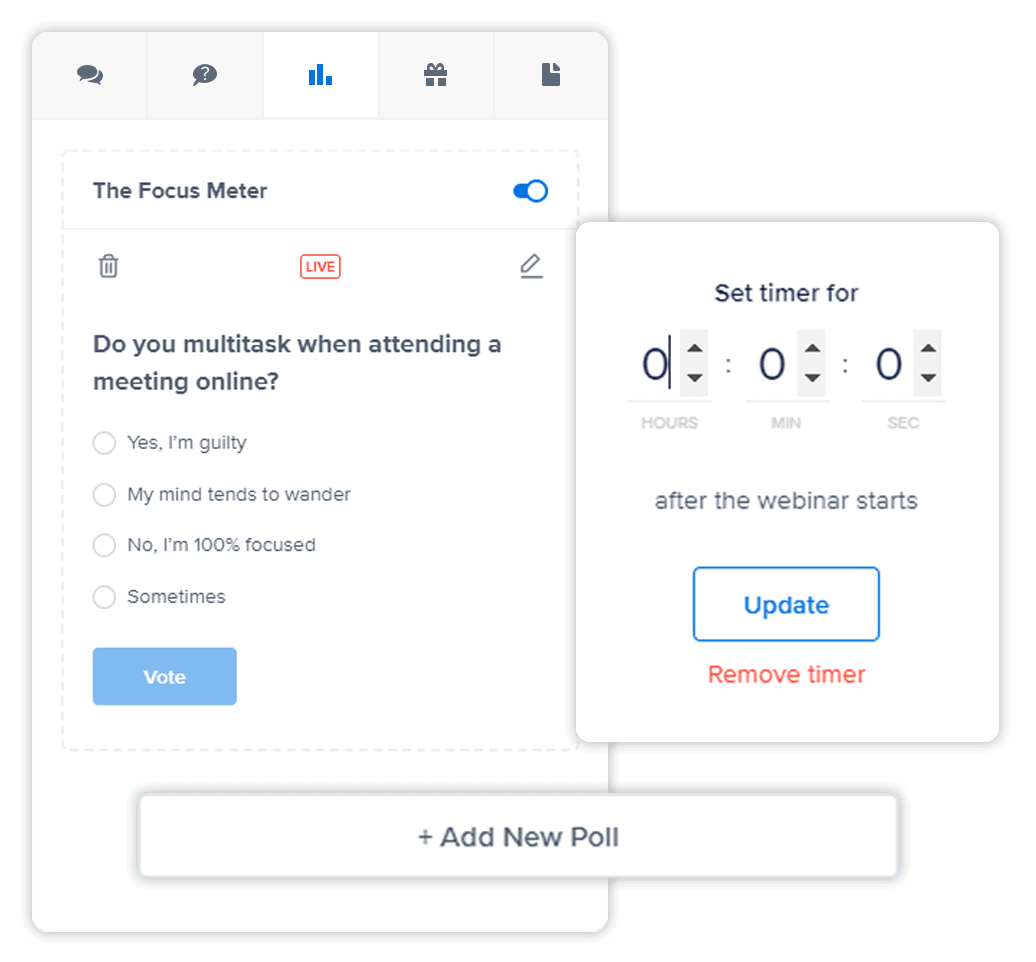

Pro Tip: Incorporate live polls and surveys throughout your webinar to keep the session interactive and gather real-time data. Use this information to refine your marketing strategies and product offerings.
8. Launch Events
Host webinars to announce and demonstrate new product launches or updates. This creates excitement and buzz around your new offerings.
Pro Tip: Offer exclusive early access or special discounts to webinar attendees as an incentive to join and engage with your launch event.
What Are the Benefits of Webinars for Marketers?
Webinars are loaded with benefits for marketers, and here are some of the most prominent ones:
- Generate Qualified Leads Through Targeted Webinars:
Webinars attract a focused audience interested in specific topics, making it easier to capture and convert qualified leads. The interactive nature of webinars allows marketers to gather detailed information about participants, enhancing lead nurturing efforts.
- Build Brand Authority by Sharing Expertise:
While it delivers valuable insights and expert knowledge, a webinar benefits marketers by positioning a brand as a leader in its industry. This fosters trust and credibility among attendees, encouraging them to turn to the brand for future needs and recommendations.
- Engage Directly With Your Audience in Real-Time:
Webinars provide an interactive platform for real-time engagement, allowing marketers to answer questions, gather immediate feedback, and build a deeper connection with the audience. This direct interaction helps create a personalized experience, enhancing audience loyalty. Webinar examples often showcase how this live interaction can transform audience engagement.
- Demonstrate Products and Services Live:
Live demonstrations during webinars offer an effective way to showcase products or services, highlighting their features and benefits dynamically. This visual and interactive approach can significantly influence purchasing decisions and drive sales.
- Reduce Marketing Costs With Economical Webinars:
Compared to traditional in-person events, webinars eliminate costs associated with travel, venue rental, and logistics. This makes webinars a cost-effective marketing strategy that can reach a global audience without significant financial investment.
- Repurpose Webinar Content for Extended Value:
Recorded webinars can be transformed into various content formats, such as blog posts, social media snippets, or eBooks. This extends the value of the original content, allowing it to reach a wider audience and reinforce marketing messages across multiple channels.
- Leverage Measurable Analytics for Better Insights:
Webinars provide detailed analytics on attendee behavior, engagement levels, and overall performance. These insights help marketers refine their strategies, tailor content to audience preferences, and improve the effectiveness of future webinars.
- Create Networking Opportunities Within Your Industry:
Webinars facilitate connections between attendees, fostering networking and potential partnerships. This can lead to collaborations, new business opportunities, and a stronger professional network within the industry.
- Boost Conversion Rates With Compelling Presentations:
The personalized and informative nature of webinars can significantly enhance conversion rates. Engaging presentations and direct interactions make attendees more likely to take action, whether it’s making a purchase, signing up for a service, or downloading additional content.
- Enhance Content Marketing Efforts With In-Depth Webinars:
Webinars add depth to content marketing strategies by providing comprehensive and interactive content. This helps attract and retain a loyal audience, as webinars offer valuable information and insights beyond traditional content formats.
10 Best Practices for Webinar Marketing Strategy
To maximize your webinar marketing success, follow these proven practices that top-performing marketers use:
1. Test Your Technology 24 Hours Before Going Live
Run a complete tech rehearsal with your presentation, audio, and internet connection. Always conduct a full dress rehearsal the day before to maintain high technical success rates.
2. Start Your Webinar Marketing Promotion 2-3 Weeks in Advance
Give your audience enough time to plan and register. Longer promotion cycles typically result in 40% higher attendance rates compared to shorter promotion windows.
3. Keep Your Webinar Between 45-60 Minutes
This duration allows for 30-40 minutes of content plus Q&A without losing audience attention. Data shows attendance drops significantly after the 60-minute mark.
4. Use the 70-20-10 Rule for Content
Allocate 70% of your time to valuable content, 20% to your product/service, and 10% to the call-to-action. This ratio keeps your audience engaged while achieving your marketing goals.
5. Send Your Webinar Recording Within 24 Hours
Quick follow-up is crucial for webinar marketing success. The sooner you deliver the recording, the higher the engagement with your follow-up content, while the webinar is still fresh in attendees’ minds.
6. Create Urgency with Limited-Time Offers
Present exclusive deals that expire within 48-72 hours post-webinar. This tactic can increase conversion rates by up to 3x on webinar-exclusive offers.
7. Use Interactive Elements Every 5-7 Minutes
Keep engagement high with polls, questions, or quick exercises. This prevents the “webinar fatigue” that typically sets in after 10 minutes of continuous presentation.
8. Optimize Your Registration Page for Mobile
Most webinar registrations now happen on mobile devices. To maximize conversions, ensure your registration process is simple and takes minimal time on smartphones.
9. Follow Up with Non-Attendees Differently
Send different email sequences to registered non-attendees versus attendees. Non-attendees should receive the recording with compelling reasons to watch, while attendees get additional resources and next steps.
10. Track Beyond Basic Metrics
Monitor engagement time, question quality, and post-webinar actions, not just registration and attendance numbers. These deeper metrics reveal the true ROI of your webinar marketing efforts.
Boost Your Brand Value & Conversions With Effective Webinar Marketing
Webinar marketing offers a powerful tool to expand your reach, generate leads, and establish yourself as an industry leader. You can nurture strong relationships and convert viewers into loyal customers by providing valuable content and fostering audience engagement.
Remember, a successful webinar rests on the right platform. A good webinar tool, such as WebinarNinja, can help you create impactful presentations with its easy-to-use interface and engaging features. From interactive polls and screen sharing to seamless integrations with marketing tools, it can streamline your workflow and maximize your ROI.
Take advantage of the free trial and discover how WebinarNinja can help you enhance your marketing efforts with minimal expenses.
Want to host a webinar for free?
Use WebinarNinja to teach, improve marketing, and grow your sales.







